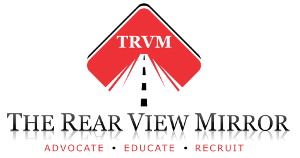Ontario Premier Kathleen Wynne announced in July that Greater Toronto Area motorists should prepare themselves for High Occupancy Toll (HOT) lanes. That news, unveiled on the heels of the Pan Am Games, was based on experience with 150 kilometres of temporary High Occupancy Vehicle (HOV) lanes – on top of the pre-existing 85 kilometres that remain in place today.
The announcement shouldn’t take anyone by surprise. The governing Liberals referenced the potential of tolls during the last two election campaigns, as they explore ways to fund a 10-year, $130-billion plan to improve public transit and reduce congestion in and around the province’s largest city. With plans already underway to expand HOV lanes on highways 401, 410 and 427, we can only assume that tolls will be applied to at least some of these routes. But the Ontario government needs to ensure that the planning process isn’t overly swayed by the hunger for revenue.
There are significant differences between the options.
The HOV lanes are designated for vehicles with two or more occupants, and are generally in place during peak traffic periods. In

contrast, the HOT lanes will also allow vehicles with a limited number of occupants to pay a toll for the right to use the same lanes.
California introduced North America’s first HOT lanes in 1995, controlling access in the express lanes along I-91, and the idea quickly spread. By 2012, the U.S. had 473 kilometres of HOT lanes, and another 262 kilometres were being constructed. Israel added HOT lanes of its own to Highway 1 in 2011.
In theory, converting an HOV lane into a tolled option can reduce congestion by making way for vehicles that would not otherwise be allowed. The added benefit is that the extra motorists pay a user fee – let’s just call it a tax – that can be used to help fund future highway infrastructure.
But things don’t always work as planned.
If poorly designed, the HOV and HOT lanes can actually increase the congestion on lanes which offer free travel. Fleets that traveled through the Toronto area during the PanAm Games experienced examples of this first hand, as traffic crammed into the free lanes in specific high-volume areas. Truck drivers had no other choice, and some of their travel times increased accordingly. It wasn’t quite the chaos that some people had predicted, but we need to remember that this experiment happened when schools were out for the summer, and at a time of year when traffic volumes are traditionally lighter.
Yes, allowing people to pay for the privilege of using an HOT lane will shift some traffic patterns, particularly when the lanes are introduced on highways that don’t currently have any HOV lanes at all. Every driver who makes that choice will represent one less vehicle in the free lanes.
In reality, most road users will opt for the free lanes. Left with one fewer lane available to them, it all leads to added congestion.
If the province is going to pursue the idea of HOT lanes, it should be ready to consult with every stakeholder, including the transportation industry.
There are some important questions to be answered before any signs are posted or lanes are marked. Might trucks be allowed to use HOT lanes on a pay-per-use basis, or will they be banned from using the lanes altogether? The province needs to understand that a complete ban will likely increase the delays experienced by fleets across the Greater Toronto and Hamilton Areas – regions where private fleets account for most of the trucks. This will increase costs throughout the supply chain.
Nobody should be eager to make a bad situation worse.
If the Liberal government continues with plans for HOT lanes, we need legislation to ensure that toll money is invested solely into rebuilding highways and commuter infrastructure, rather than spilling into general coffers to fund unrelated government programs.
We also need expanded highways to support these plans. If the province wants to add HOT lanes on an already-congestion three-lane stretch of highway, it should be ready to construct a fourth lane specifically for this use. Simply adding signs and toll gantries to an existing lane will just add to the traffic headaches and commuter chaos that already exist.
After all, this is supposed to be about reducing congestion rather than introducing a tax grab. Isn’t it?
About the Author
“Mike has 25 years’ of wide ranging experience in the trucking industry, performing such duties as a livestock and grain hauler for 3
years, followed by 5 years of long haul across North America hauling refrigerated and general freight. Mike was also a full time certified driver trainer for 2 years, and then transitioned into Safety and Compliance for 2 years, and then spent over 12 years as a Fleet manager for a Private Fleet. Mike is now the President of the Private Motor Truck Council of Canada, Canada’s only National Association that represents the views and interest of today’s Private Fleets.” Mike can be reached at trucks@pmtc.ca

